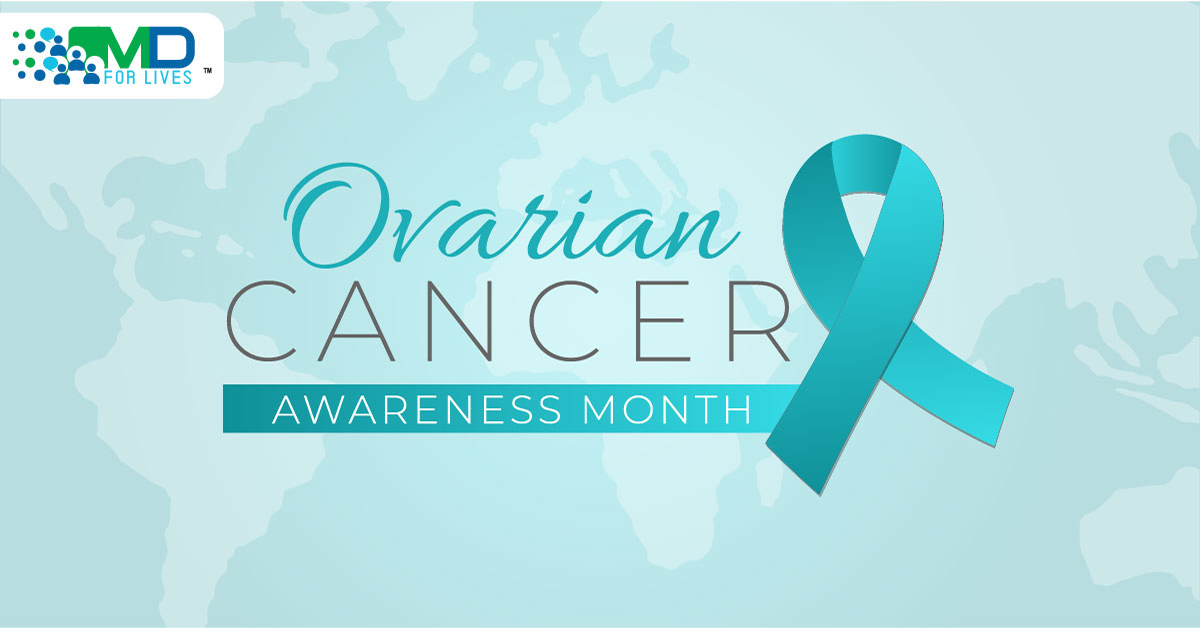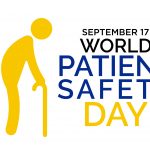September is considered as the National Ovarian Cancer Awareness month. Each year, the scientific community gathers more information about ovarian cancer as they continue to discover and unravel new treatments to defeat it and offer hope to women. Increasing awareness about its warning signs and symptoms (i.e., abdominal bloating, pelvic tenderness or lower back pain, increase in abdominal girth and urinary urgency) as well as risk factors, can facilitate early diagnosis and consequently improve life expectancy.
Ovarian cancer has been one of the many gynecologic problems that plague women across the globe. It currently ranks third as the leading cause of gynecologic cancer death in women, with cervical and uterine still ranking ahead of it. Based on the overall cancer standing, from being the seventh most common cancer in women in 2018, it has now gone up to be the fifth. It is also alarming that it has the poorest prognosis among gynecologic cancer and has even been included among the top ten highest cancer mortality rates, ranking 8th with a rate of 3.9%. Ovarian cancer has an epidemiological heterogeneity. Across the globe, incidence and prevalence differ for every race and country. According to the American Cancer Society, in the United States, ovarian cancer is expected to account for 21,750 new cases in 2020, and approximately 13,940 women have been predicted to die from ovarian cancer. Hispanics, Asians, and blacks are the other races/ethnicities with high incidence rates based on epidemiological data from 2010-2014.
Preventive Practices: Ovarian Cancer Control and Treatment
Ovarian cancer cases are classified into different subtypes, namely epithelial, germ cell, and stromal. Existing studies reveal that in the majority of the patients reported, 90% are epithelial in origin. The majority of the cases are asymptomatic, which is the primary reason why ovarian tumours grow undetected and are diagnosed in the advanced ages when cancer would already be unresponsive to treatment. The lack of early screening and detection tests specific for ovarian cancer have also added to the disease burden.
In 2016, the 40 to 59 and 60 to 79 age groups posted the most number of ovarian cancer in the US, accounting for 10,446 cases, a higher portion of cases (7,669) were from the 60 to 79 age group. Incidence increases with age; however, it is not the only risk factor that predisposes women to ovarian cancer. Several studies from the medical community have shed light on the possible etiologies that predispose women to develop ovarian cancer. Established risk factors have been narrowed down based on multiple non-modifiable factors such as age, race, nulliparity, genetics, and frequent ovulation. Modifiable risks include the use of combined hormonal contraceptives and a diet rich in animal fat or saturated fat. However, one of the unknown facts is that one of the most substantial risk factors is genetic (BRCA mutation).
An individual’s lifetime risk increases by 1.5 to 12% if they have one or more first-degree relatives with a history of ovarian cancer. Identifying these risk factors early on seems to be the best cancer control measure at the moment. Suppose a woman is indeed at a high risk of ovarian cancer because of family history. In that case, prophylactic surgery or risk-reducing salpingo-oophorectomy (RRSO) can be done to prevent carcinogenesis from even occurring since the ovaries would be removed in the process. However, this may not be too conservative and suitable for women who still wish to bear children. Besides, efforts can be made to reduce the carcinogenic effects of modifiable risk factors.
Primary prevention can prevent the disease even before its biological onset. Studies have shown that soy and phytoestrogen consumption may decrease ovarian cancer risk and increase protective factors. Reducing the intake of animal fat can also reduce risk. Recent studies have explored the role of vitamin D supplementation in ovarian tumour growth suppression, but its effectiveness is still under scrutiny and has been debatable.
Apart from identifying these risk factors, prompt treatment is paramount for disease survival. When signs and symptoms manifest, the best way to thwart disease progression is to get checked as soon as possible, and from there, the treatment plan can be initiated. The problem is, most cases of documented ovarian cancers are asymptomatic, with the tumour growing unnoticed and insidiously. The onset of symptoms is often delayed, and lack of proper screening results in its diagnosis in the advanced stages, which usually connotes poor prognosis and even death despite treatment with surgery and chemotherapy.
Current treatment modalities include multi-agent chemotherapy (Paclitaxel and Carboplatin) and surgery or removing all resectable gross lesions or tumours via total abdominal hysterectomy with or without bilateral salpingo-oophorectomy. The development of more targeted therapies for ovarian cancers that could boost cancer survival is still ongoing research. The most promising clinical trial to date is the SOLO-1 trial, which investigates and tests Olaparib, a poly ADP ribose polymerase (PARP) inhibitor, as maintenance therapy for Patients with BRCA Mutated Advanced (FIGO Stage III-IV) Ovarian Cancer following a Platinum-based Chemotherapy.
The incidence and prevalence of ovarian cancer cases worldwide have not declined since 2010. An upward trend has been forecasted until the year 2035, with a high likelihood of a rising number of patients based on recent studies. However, there is a potential to reduce the suffering and the burden of ovarian cancer among women and, ultimately, improve their life expectancy. Awareness of the risk factors can lead individuals to make informed choices such as undergoing prophylactic surgery and making lifestyle modifications — adding soy products high in phytoestrogens and reducing saturated fat intake.








1 Comment
FDA ALERT REGARDING RISKS ASSOCIATED WITH OVARIAN CANCER SCREENING TESTS - MDforLives
5 years ago[…] cancer is the sixth most commonly diagnosed cancer worldwide. Second, only to uterine cancer, it is a leading cause of gynecologic cancers and causes more deaths per year than any other cancer […]